What Are Uterine Fibroids?
Uterine fibroids are very common non-cancerous (benign) growths that develop in the muscular wall of the uterus. They are most common among women of childbearing age and more prevalent among African-American women. Fibroids are the cause of more than 200,000 hysterectomies every year. Fibroids are classified according to their location in the uterus.
While fibroids do not always cause symptoms, their size and location can lead to problems for some women, including pain and heavy bleeding.
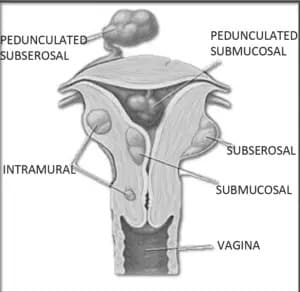
Subserosal fibroids develop under the outside covering of the uterus and expand outward through the wall. They can cause pelvic pain, back pain and generalized pressure. Intramural fibroids develop within the lining of the uterus and expand inward. These are the most common type and can result in heavier menstural bleeding and pelvic pain, or back pain. Submucosal fibroids develop just under the lining of the uterus. Even a very small submucosal fibroid can cause heavy bleeding (gushing) and very prolonged periods.
What Are Common Symptoms of Uterine Fibroids?
Some fibroids produce mild or no symptoms, while others can cause considerable pain/pressure and limit your lifestyle. The most common symptoms are:
- Heavy or frequent menstrual periods
- Pelvic pain/pressure
- Pain during or after sexual intercourse
- Urinary frequency
- Constipation and/or bloating
- Abnormally enlarged abdomen
What Is Uterine Fibroid Embolization (UFE)?
Uterine fibroid embolization (UFE), also known as uterine artery embolization (UAE), is performed by an interventional radiologist, a physician who is trained to perform this and other types of embolization and minimally invasive procedures. It is performed while the patient is conscious, but sedated and feeling no pain. It does not require general anesthesia. The physician makes a tiny nick in the skin in the groin or wrist and inserts a microcatheter into the femoral or radial artery. Using real-time imaging, the physician guides the microcatheter through the artery and then releases small spheres, the size of grains of sand, into the uterine arteries that supply blood to the fibroid tumor. This blocks the blood flow to the fibroid tumor and causes it to shrink and reabsorb over time.
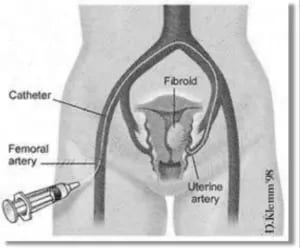
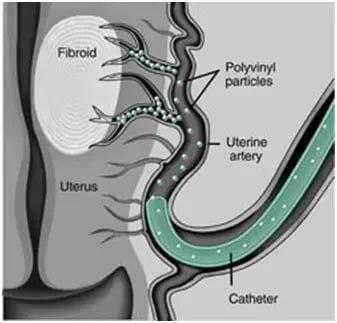

*Rights reserved with the owner of the video.
How Are Uterine Fibroids Diagnosed?
Some women live with fibroids and do not have any symptoms. Routine gynecologic exams, detailed description of symptoms, and certain imaging studies can accurately diagnose fibroids. These imaging studies can include ultrasound, magnetic resonance (MRI) or computed tomography (CT) of the pelvis.
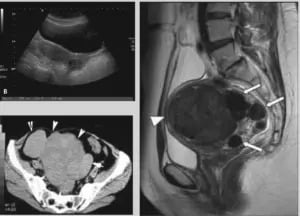
What Are The Uterine Fibroids Treatment Options?
Based on your medical history, severity of symptoms, and location and size of your fibroids, your options for treatment may include:
- Medications (these only treat symptoms and do not have a direct effect on the fibroids)
- Surgery (myomectomy or hysterectomy)
- Non-surgical treatment (Uterine Fibroid Embolization)
What Are The Advantages of Uterine Artery Embolization?
- Preserves the uterus
- Minimally invasive
- Low complication rate
- Short recovery time
- Treats all the fibroids with one procedure
- Recurrence is rare
- No adhesions or scar tissue
- General anesthesia not necessary
What Should You Expect After A UFE Procedure?
- You will be prescribed medications for pain management
- You may not drive while taking the prescription pain medication
- Symptoms will markedly improve in 90% of patients
- Treated fibroids rarely recur
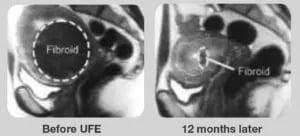
- You will need to take off work 1-2 weeks (compared to 4-6 weeks for surgical procedures.)
Contact Our Practice
If you would like to get started on treatment for uterine fibroids, please contact us today at 703-763-5224 or fill out our online contact form and we will get back to you as soon as possible. We have three convenient locations in Virginia including Fairfax, Fredericksburg, and Woodbridge.

